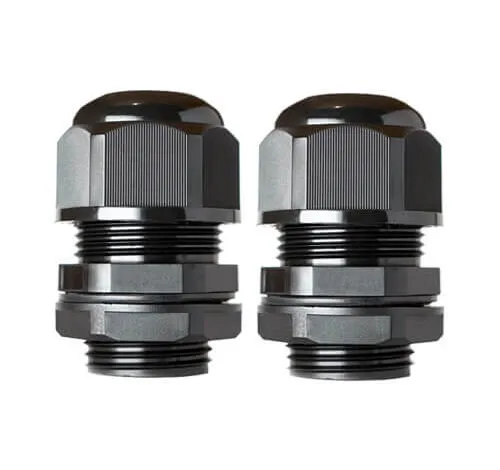Securing Connections: The Importance of Cable Gland Connectors and Elbow Cable Glands

In the world of electrical and electronic engineering, where precision and safety are paramount, cable gland connectors and elbow cable glands play a vital role. These unassuming components are the unsung heroes behind the scenes, ensuring the integrity and reliability of electrical connections. In this comprehensive guide, we will delve into the world of cable gland connector, explore the significance of elbow cable glands, and highlight their applications and benefits.
Understanding Cable Gland Connectors
What are Cable Gland Connectors?
Cable gland connectors, often simply referred to as cable glands, are mechanical devices designed to provide secure entry points for cables into electrical equipment, control panels, and enclosures. They serve several crucial functions:
- Cable Retention: Cable glands hold cables firmly in place, preventing accidental pulls or twists that could damage wires or connections.
- Environmental Protection: They create a seal around the cable entry point, safeguarding against dust, moisture, dirt, and other environmental contaminants that could compromise the integrity of the electrical system.
- Strain Relief: Cable glands distribute the force evenly, reducing strain on the cable, and thus the risk of damage to the conductors or connections.
Types of Cable Gland Connectors
Cable gland connectors come in various types to accommodate different cable sizes, materials, and environmental conditions. Here are some common types:
- Armored Cable Glands: Designed for use with armored cables, these provide additional protection and strain relief.
- Waterproof Cable Glands: Ideal for outdoor applications or areas exposed to moisture, these glands ensure a watertight seal.
- Plastic Cable Glands: Lightweight and corrosion-resistant, these are made of durable plastic materials.
- Brass Cable Glands: Offering excellent conductivity, brass glands are suitable for harsh environments.
- Explosion-Proof Cable Glands: These prevent the spread of explosions in hazardous areas by sealing off cable entry points.
Applications of Cable Gland Connectors
Cable gland connectors find applications across various industries, including:
- Electrical Panels: They maintain the integrity of cable entries in control panels and distribution boards.
- Renewable Energy: In solar and wind power installations, cable glands protect cables from environmental factors.
- Industrial Machinery: Cable glands secure cables in manufacturing equipment, ensuring reliable operation.
- Marine and Offshore: Vital for maintaining electrical connections in marine and offshore environments.
The Significance of Elbow Cable Glands
An elbow cable gland, also known as an elbow cable gland connector, is a specialized type of cable gland with a 90-degree bend. These are particularly useful when space is limited or when cables need to be routed around corners or obstacles.
Benefits of Elbow Cable Glands:
- Space Efficiency: Elbow cable glands allow cables to be routed in tight spaces, making them ideal for cramped enclosures or installations.
- Bend Radius Control: They help maintain the proper bend radius of cables, preventing damage to the conductors.
- Cable Protection: Elbow cable glands provide cable protection and environmental sealing, just like traditional cable glands.
Conclusion: The Unsung Heroes of Electrical Engineering
In the intricate world of electrical and electronic installations, cable gland connectors and elbow cable glands may seem inconspicuous, but their significance cannot be overstated. These unassuming devices are the guardians of cable integrity, ensuring that your connections remain secure, your systems operate without a hitch, and safety is maintained.
So, whether you’re working on an industrial project, a renewable energy installation, or any application that involves cable routing and protection, understanding the importance of cable gland connectors and elbow cable gland is key. These small yet indispensable components are the backbone of electrical engineering, quietly securing your connections and guaranteeing the reliability of your systems.



